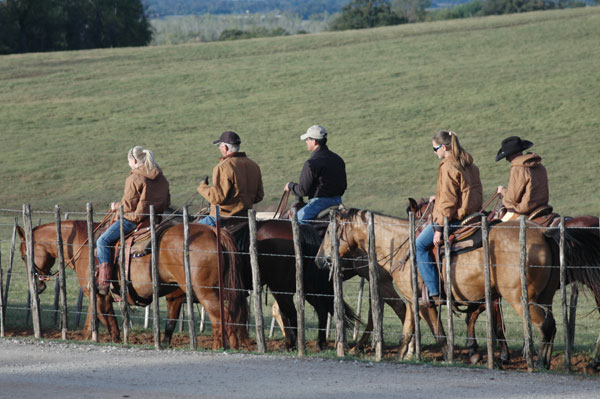There’s currently no vaccine available in the U.S. for against tick fever, but animal health officials hope that may change soon.
April 12, 2012

Medicated molasses tubs that provide 99.9% reduction in fever ticks may be available to Texas and other cattlemen this year. And two tick-control vaccines also have USDA and Texas animal health officials confident in future methods of controlling the pestering parasites.
“The tubs (which contain an ivermectin wormer) have been very effective,” said Kevin Varner, area veterinarian in charge, USDA Plant and Animal Health Inspection Service in Austin, TX. “In our studies (in two South Texas counties), we had every animal in a pasture infested. We checked tick numbers every week. We watched tick numbers drop to a 99.9% reduction.”
Varner was among speakers at a Texas and Southwestern Cattle Raisers Association fever tick seminar during the recent TSCRA convention. “We’re optimistic that the ivermectin tubs will receive FDA approval later this year,” he said.
Cuba has seen success in tick control through use of the Gavac vaccine, not yet legal in the U.S. Carlos Borroto, vice director of the Center for Genetic Engineering and Biotechnology in Havana, Cuba, said the vaccine is being tested through USDA’s Kerrville, TX laboratory and is showing strong results.
He said the vaccine produces an antibody, which weakens fever ticks on cattle. “It reduces the number of ticks, lowers their egg laying capacity and egg viability and reduces tick populations in cattle and pastures,” Borroto said. “Reduction is accumulated in each generation.”
The vaccine has shown a 99%+ control of annulatus fever ticks in the Kerrville studies, he said, but only a 26-33% success rate for controlling microplus fever ticks. “We’re still seeing some constraints but feel we can overcome them,” Borroto said.
Dee Ellis, Texas state veterinarian, said border state animal health officials are also hopeful that a second vaccine, from Pfizer Animal Health, will meet regulatory approval for use on cattle.
“Tick control is a journey, not a short-term sprint,” Ellis said, adding that the recent Texas drought actually helped kill more ticks. “We have ticks contained closer to the Rio Grande River, so we’re cautiously optimistic.”
Varner said USDA and state animal health officials remain concerned about deer and other wildlife that are often higher carriers of ticks than domestic cattle. “We’re trying to build a protective barrier for cattle on the Mexico side of the river,” he said. “Wildlife numbers are down, but they still cause problems for us.”
While state and federal officials can require treatment of cattle in tick-infested regions, no such regulations are in line for wildlife. Ellis said state legislation is needed to make such treatment for ticks in wildlife lawful.
You May Also Like



